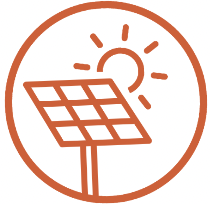
Energy & Emissions Progress, 2018-22
To combat the serious threat of climate change, we aim to dramatically reduce energy consumption and associated greenhouse gas (GHG) emissions.
2018 Pitt Sustainability Plan Goals
- Carbon: Reach carbon neutrality by 2037 for the Pittsburgh campus, with an incremental goal of reducing greenhouse emissions 50% by 2030 (from our 2008 baseline).
- Efficiency: Embrace Pittsburgh 2030 District goals of 50% reduction in energy use intensity (consumption per square foot) by 2030 (below 2003 national median baseline).
- Standards: Establish design standards and operational practices to achieve energy use reduction goals.
- Renewables: Produce or procure 50% of the University’s electricity from renewable resources by 2030 and 100% by 2037.
Where We Are: Carbon Emissions
Pitt Climate Action Plan
Pitt’s 2022 Pitt Climate Action Plan outlines the important contribution of renewables to reaching carbon neutrality by 2037.
GHG Emissions Reduction & Carbon Neutrality
The University of Pittsburgh’s greenhouse gas (GHG) emissions have been decreasing since our 2008 baseline year, and we remain on track to reduce GHG emissions 50% by 2030 and achieve carbon neutrality by 2037. Pitt’s fiscal year (FY) 2019 GHG inventory showed Pittsburgh campus GHG emissions were down 21.2% from the FY08 baseline. The FY20 and FY21 GHG inventories reflect additional (albeit pandemic-influenced) reductions.
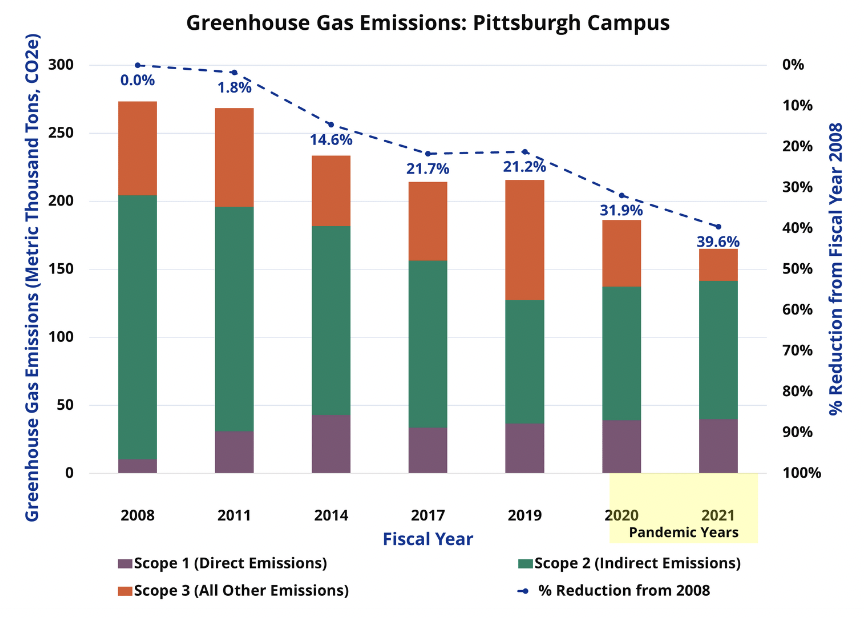
Building Energy
Building energy use has consistently decreased since 2014. Pitt will continue to pursue its sustainability efforts of a 50% reduction in energy use intensity for existing facilities by 2030. For new construction, the goal is an 80% reduction in site energy usage by 2030 in support of the 2037 neutrality goal.
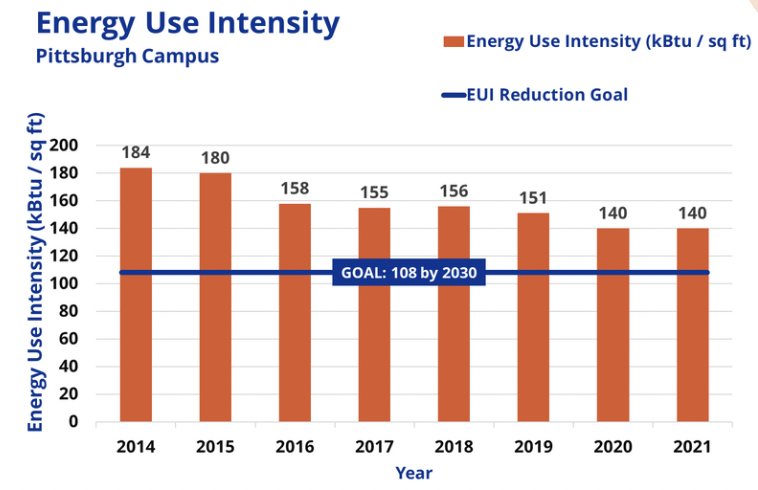
Pitt’s building energy use intensity has decreased consistently since 2014, in line with the University’s goal to reduce energy use intensity 50% by 2030 in existing buildings (below the national 2003 baseline).
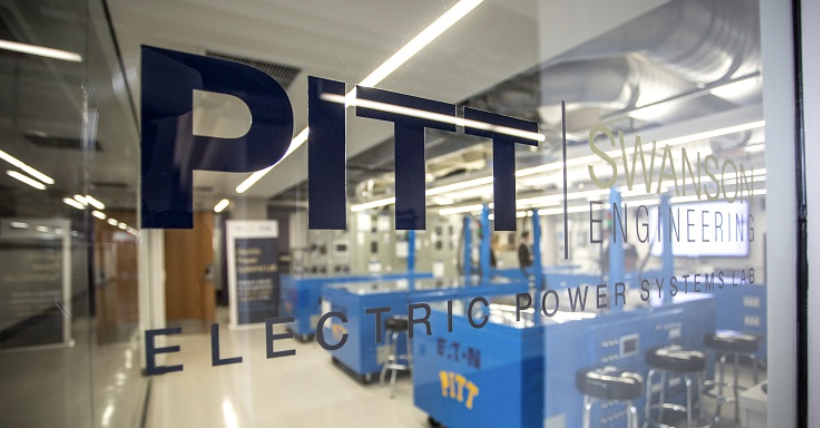
For fiscal year 2022, Pitt was 27.8% below its campus-wide baseline, keeping us on track to meet our 2030 goals. In FY20 and FY21 the Pittsburgh campus celebrated its lowest energy use intensity since 2008.
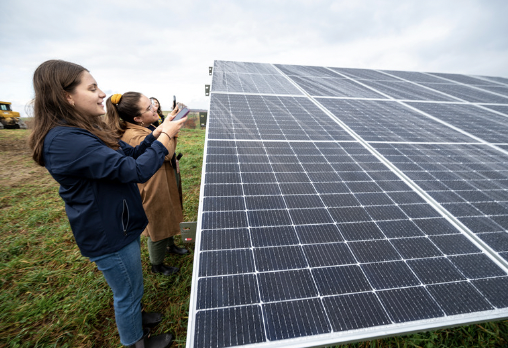
For new construction projects, every new capital project starts by aspiring towards 2030 Challenge-set site energy use intensity goals that are 80% below national baselines. The University includes energy use intensity (EUI) performance targets in requests for major capital projects (e.g., Campus Recreation & Wellness Center, Hillman Library renovations, etc.).
Clockworks Continuous Commissioning
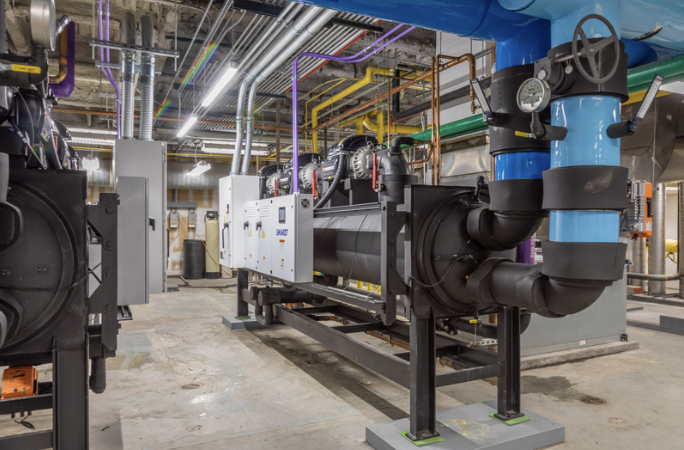
Pitt Facilities utilizes a sophisticated building automation system and special fault detection system software (Clockworks Analytics) that continuously identifies and prioritizes potential issues 24/7 in 1/3 of the 7.5 million square feet monitored by the University’s Energy Center. In 2022, Pitt was recognized by Clockworks for completing more energy saving tasks that year than any other Clockworks user; using this system, the University has saved over $1 million in 4 years.
Certified Green Buildings
All large University new construction and major renovation projects pursue third-party LEED green building certification, reflecting building energy efficiency, performance, and renewables alongside many other sustainable building strategies. In 2021, Pitt celebrated reaching the milestone of 1.2 million square feet of LEED certified space across all-campuses, with over 2.2 million square feet in design, construction, or awaiting certification.
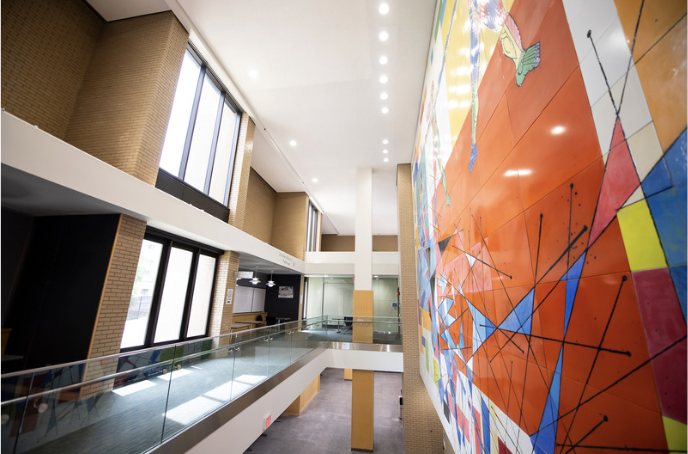
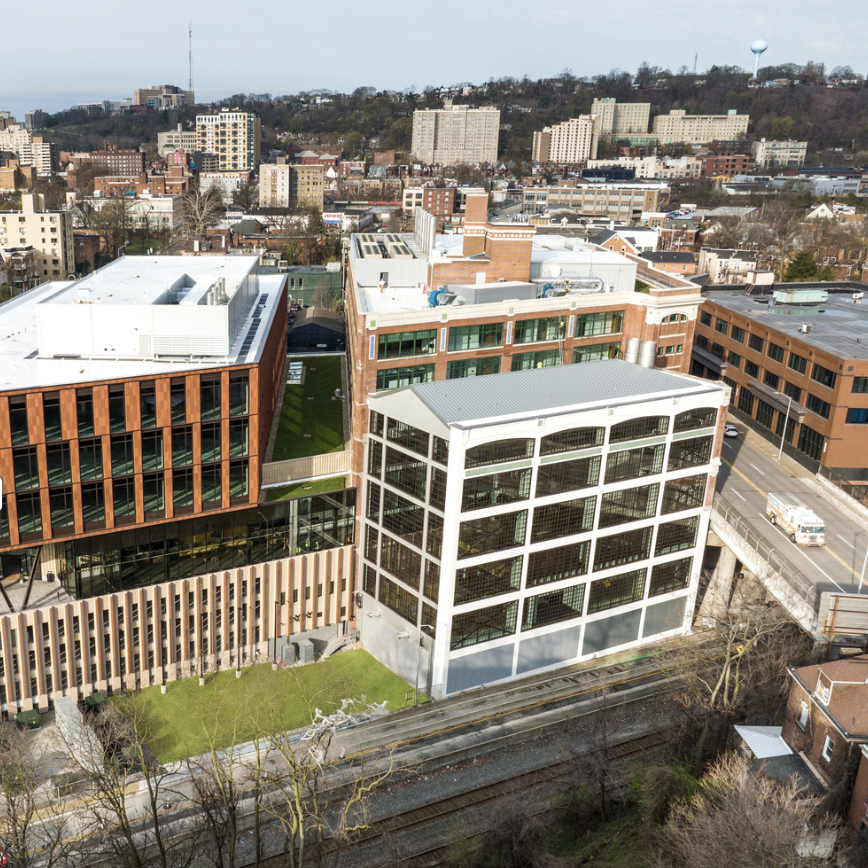
Where We Are: Renewables

Pitt is committed to producing or procuring 50% of its electricity from renewable sources by 2030 and 100% by 2037. In calendar year 2021, 16.5% of Pitt’s electricity was attributed to renewables, down from a pre-pandemic high of 23% in FY19. The CY21 achievement meets the University’s incremental target and keeps Pitt on track to reach its 2030 and 2037 renewables goals.
In calendar year 2022, 22.7% of Pitt’s electricity was attributed to renewables.
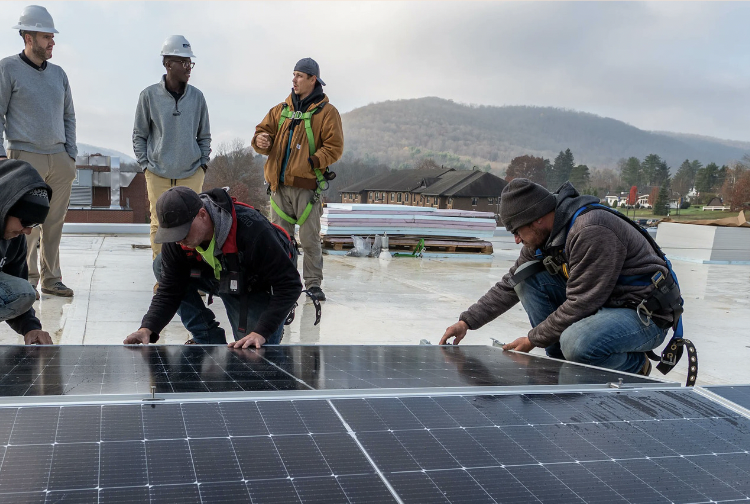
Rooftop solar panels have been installed on both the Pittsburgh and Bradford campuses (dating back to 2012 and 2014, respectively). Since 2018, the University has installed rooftop solar on its leased space in the Energy Innovation Center (~50 kW in 2020) and the George B. Duke Engineering and Information Technologies Building (223.4 kW in 2022).
Constructed in 2022, Pitt Bradford’s new George P. Duke Engineering & IT Building is pursuing LEED Gold certification and features Pitt’s largest rooftop solar array to date. Once operational, it will produce ~116,500 kWh annually, avoiding over $10,250 in electricity costs per year.
EPA Green Power Partner
In 2019, Pitt became a part of the U.S. Environmental Protection Agency Green Power Partnership, joining other universities, businesses, and organizations working to reduce the environmental impacts associated with conventional electricity use. In 2020, Pitt was ranked #30 o on the U.S. EPA’s Top Green Powered Universities list.

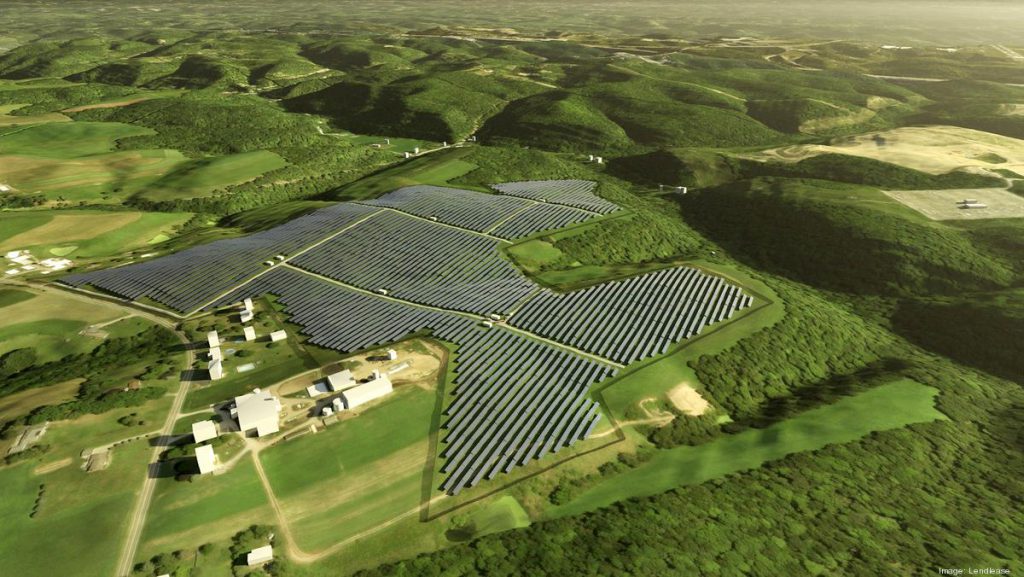
Future endeavors include the purchase all of the renewable electricity produced by a 20-megawatt solar power facility under construction just 25 miles from the Pittsburgh campus — and a commitment to acquiring 25% of its electrical needs from local, run-of-the-river hydropower facility less than 5 miles from campus on the Allegheny River.